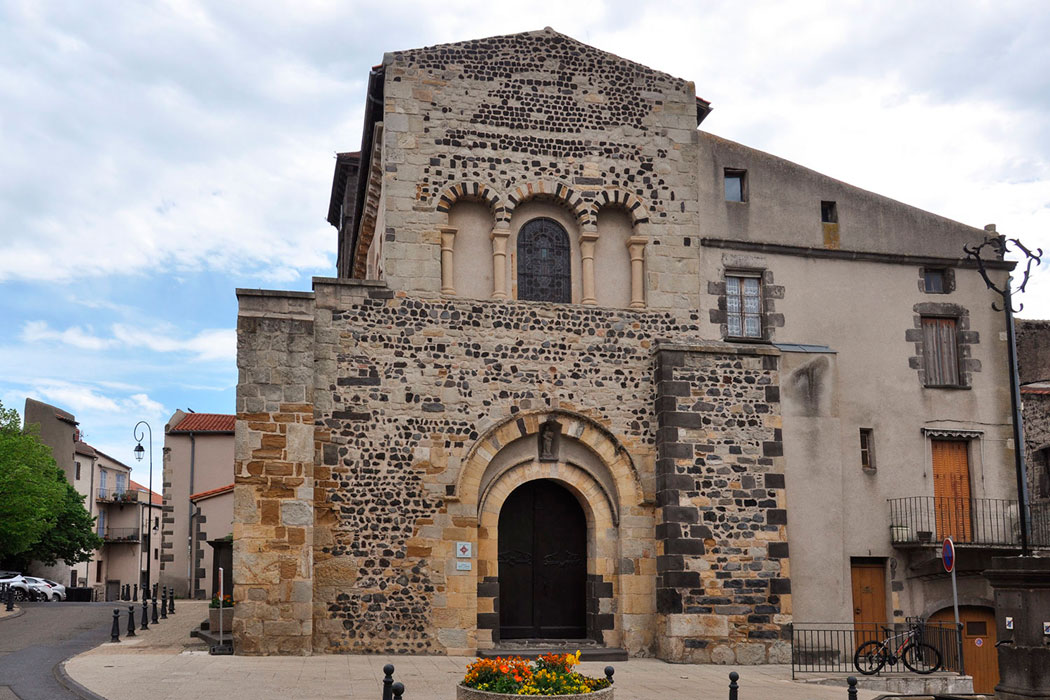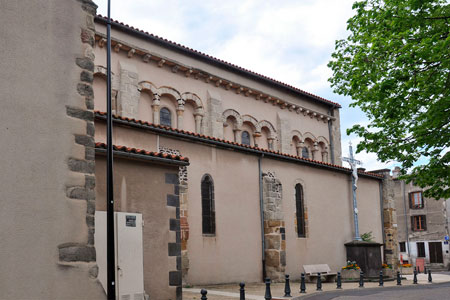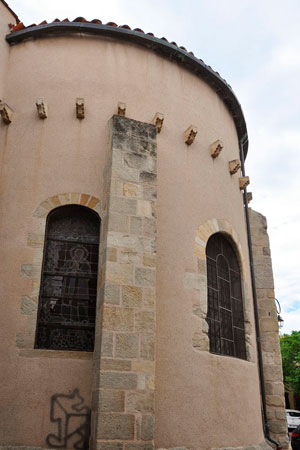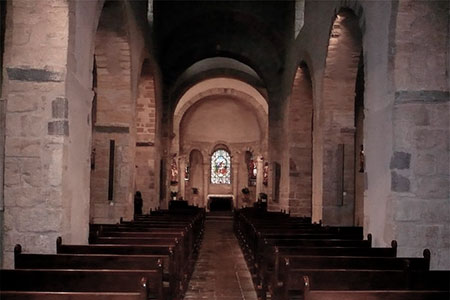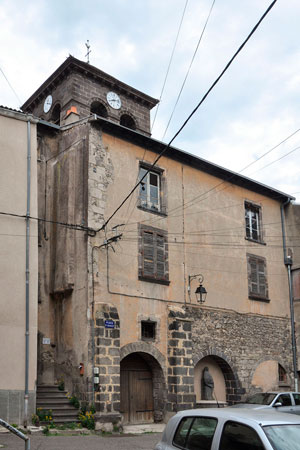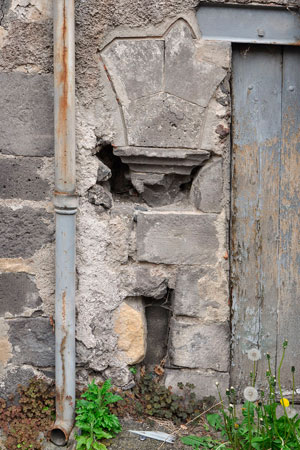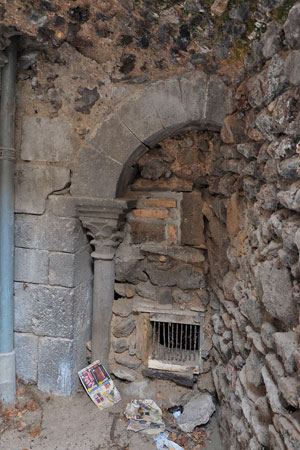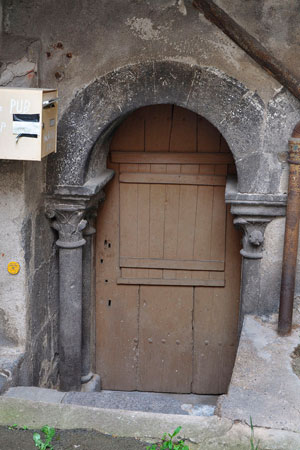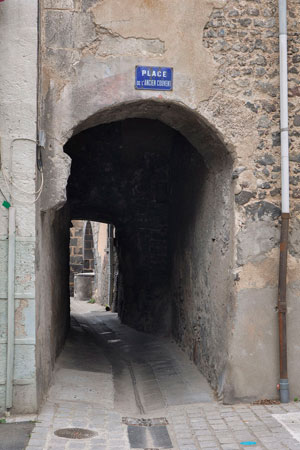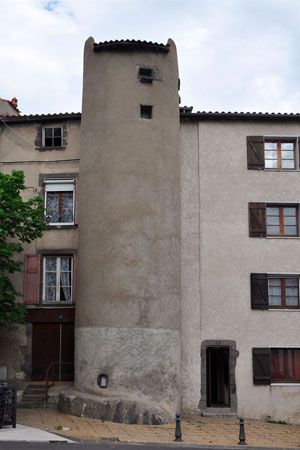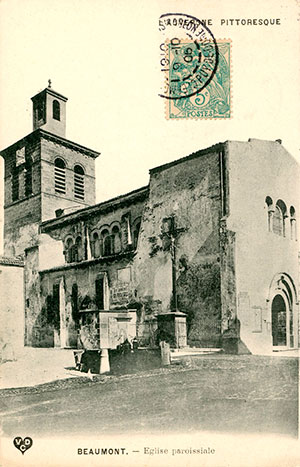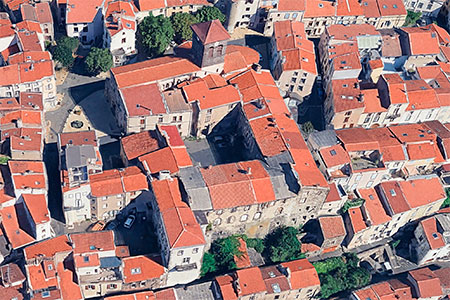Abbey of Saint-Pierre de Beaumont
Bellus Mons / Belmons / Bellimontis / Bellomonte
(Beaumont, Puy-de-Dôme)
Tradition places the foundation of the female monastery of Beaumont between the 7th and 8th centuries, sometimes linking it to Bishop Praejectus of Clermont († 676) or relating it to other female monasteries of the same period in the region, such as those of Notre-Dame de Marsat or Saint-Léger de Royat. However, the first documentary mention does not appear until 1165, when it is recorded as a house already possessing considerable estates.
It was probably first located elsewhere, but in 1123 Pope Calixtus II authorized its transfer to the present site, where, approximately between 1060 and 1090, the monastery church was built. In 1165 Pope Alexander III confirmed its possessions and placed it directly under papal authority, free from the episcopal jurisdiction of Clermont. The abbess of Beaumont, leading a community composed of noblewomen, exercised religious, social, and judicial authority over the abbey’s possessions, which included several priories. From the second half of the 14th century, the abbey suffered indirectly from the effects of the Hundred Years’ War.
The situation worsened with successive outbreaks of plague that affected the region until the mid-15th century. During this period, there were also social revolts against the abbey’s authority and numerous legal disputes. In 1545 the house was going through a serious economic crisis, while abbesses began to be appointed from outside. A certain stability was restored only in the second half of the 17th century, with the enforcement of strict enclosure and stronger administration; however, by the end of that century and throughout the next, serious difficulties reappeared. In 1790, following the Revolution, the monastic community was suppressed and the nuns forced to leave.
The church had three aisles, a transept, and a wide chancel flanked by apsidioles opening onto the crossing. To the south of the church lay the cloister and the surrounding monastic buildings that formed the complex. The ensemble underwent major alterations during the 18th century. In 1792 the monastery was attacked, its goods confiscated, and the property sold in several lots. Later modifications for secular use deeply altered its appearance. Today, ancient architectural remains are still visible, among which modern houses were gradually built. Streets were also opened between these structures. The site was not listed until 1927, and the church has undergone restoration works.
- BEAUNIER, Dom (1912). Abbayes et prieurés de l'ancienne France. Vol. 5. Bourges. Abbaye de Ligugé
- DU TEMS, Hugues (1775). Le clergé de France, vol. III. París: Brunet
- SAINT-MAUR, Congregació de (1720). Gallia Christiana in provincias ecclesiasticas distributa. Vol. 2. París: Typographia Regia
- TOURETTE, Fabrice; i altres (2006). Beaumont (Puy-de-Dôme). Une communauté de religieuses bénédictines du Moyen Âge à 1792. Mairie de Beaumont
- VERGNOLLE, Éliane (2003). L’ancienne eglise abbatiale Saint-Pierre de Beaumont. Congrès archéologique de France. 158 ss. Basse-Auvergne, Grande Limagne. Société Française d’Archéologie
